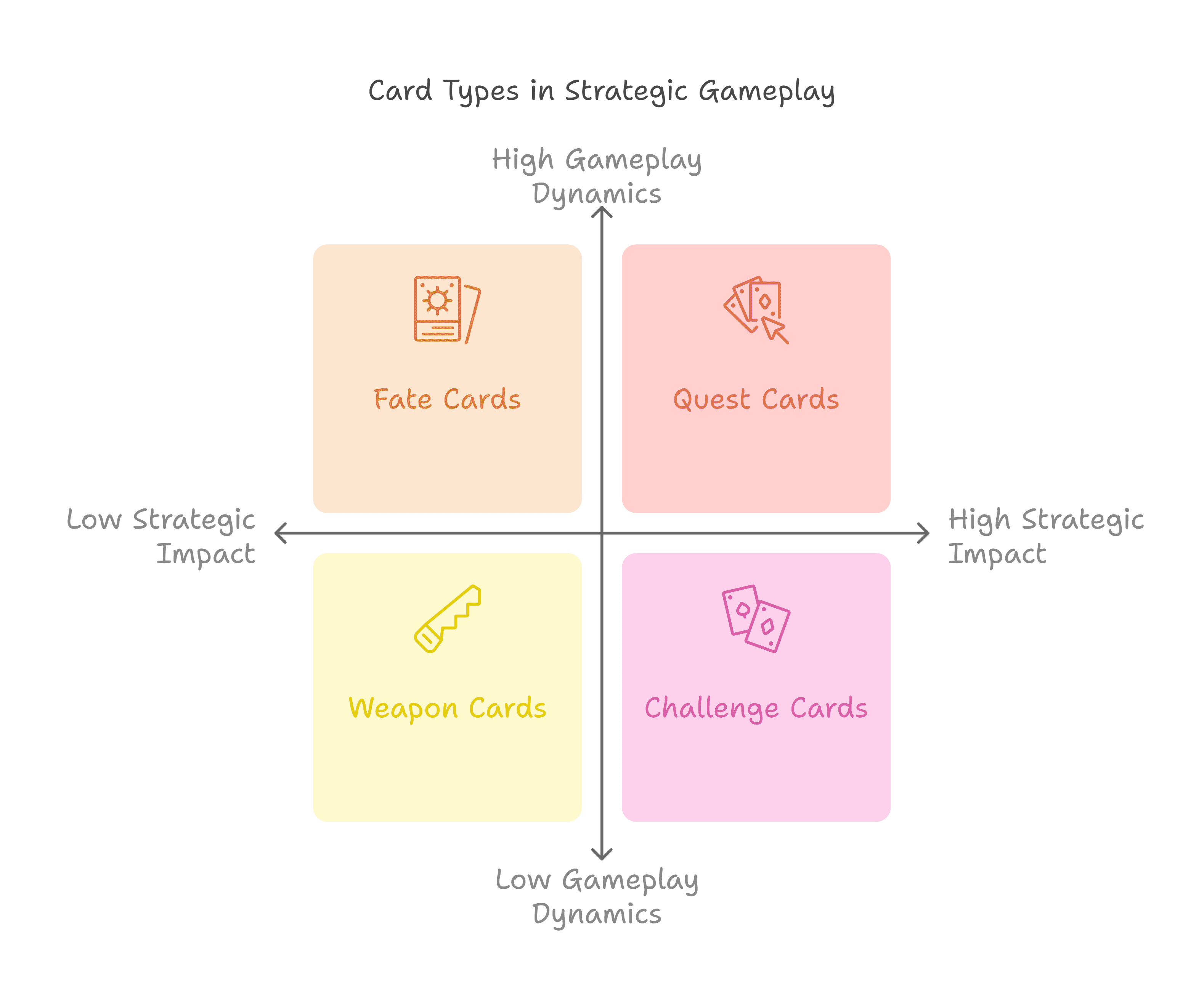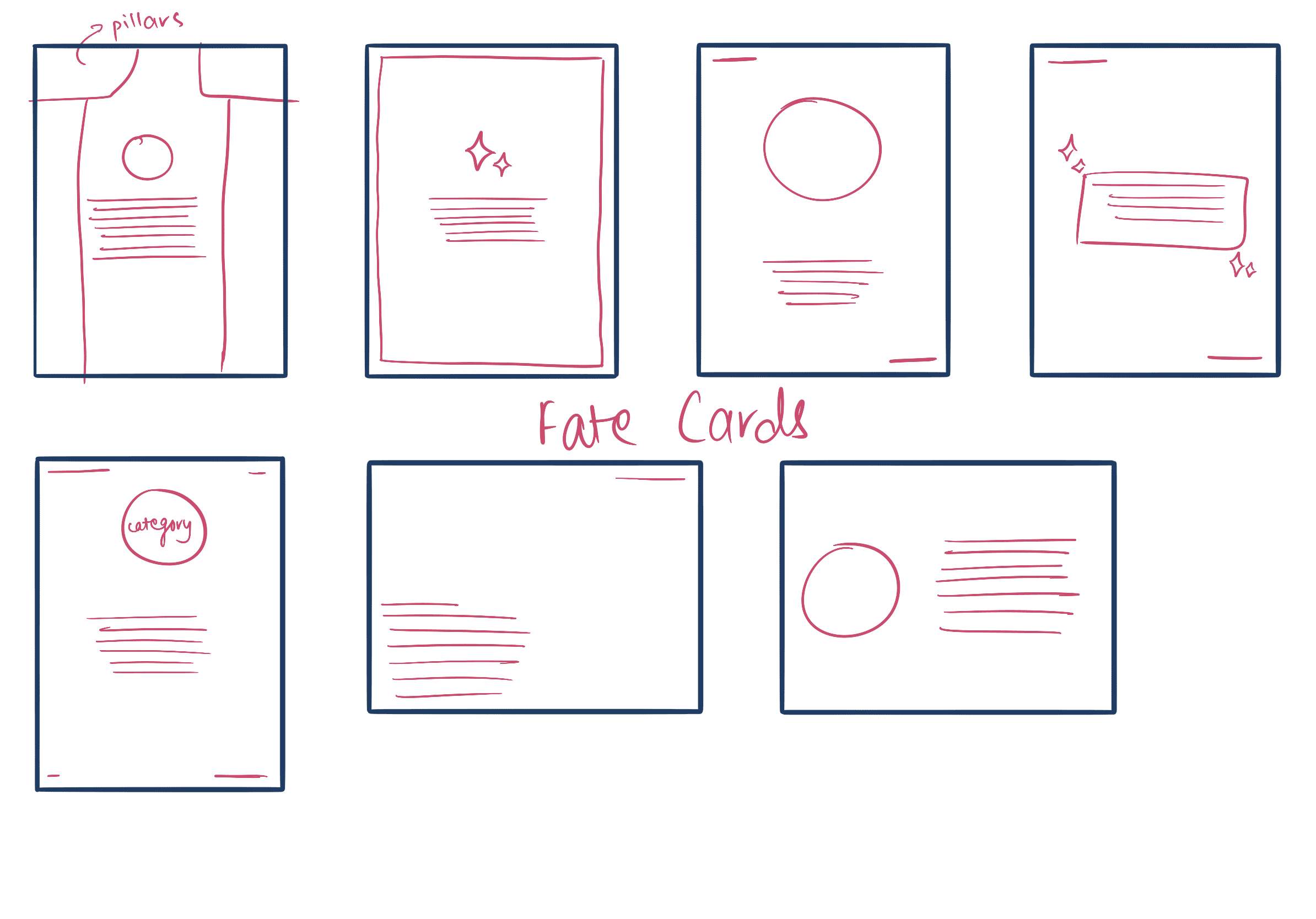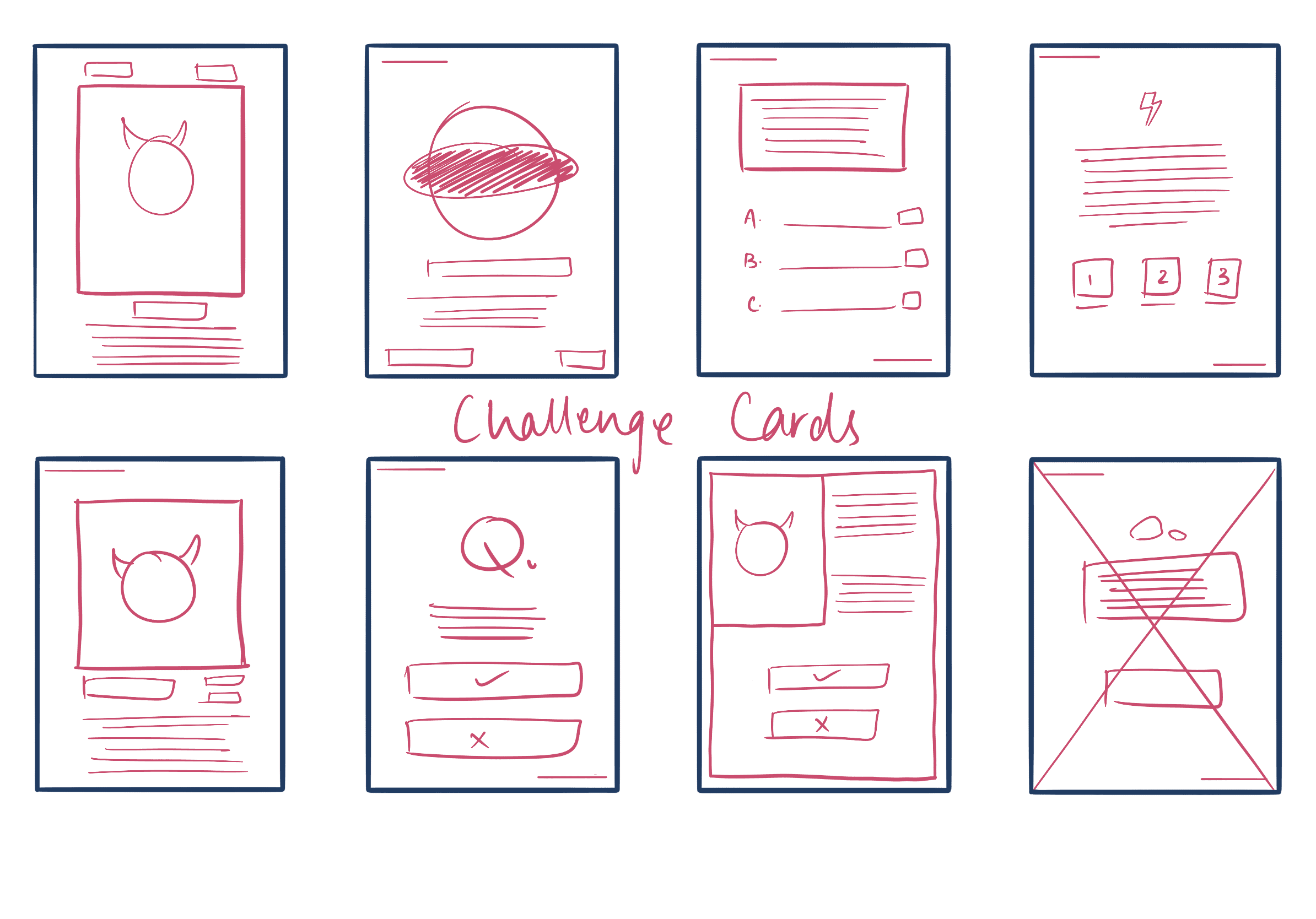

Mystic Realms: A Hero's Journey
Mystic Realms:
A Hero's Journey
Overview
Overview
Greek mythology is a complex and multi-layered body of stories, spanning gods, heroes, and legendary creatures. While rich in narrative potential, translating these myths into a playable board game posed a challenge: balancing complexity with accessibility. The project required understanding both the storytelling aspect of mythology and the strategic mechanics necessary for an engaging game. Research involved exploring classical mythological texts, analyzing existing educational board games, and studying successful strategy-based games to identify key patterns in engagement and pacing.
Greek mythology is a complex and multi-layered body of stories, spanning gods, heroes, and legendary creatures. While rich in narrative potential, translating these myths into a playable board game posed a challenge: balancing complexity with accessibility. The project required understanding both the storytelling aspect of mythology and the strategic mechanics necessary for an engaging game. Research involved exploring classical mythological texts, analyzing existing educational board games, and studying successful strategy-based games to identify key patterns in engagement and pacing.
Challenge
Challenge
The main challenge was integrating deep narrative content with clear, balanced gameplay. Greek myths are inherently complex, with interwoven character arcs and moral dilemmas. The goal was to ensure the game communicated these narratives without overwhelming players. Additionally, it needed to appeal to a wide age range,
from casual players to enthusiasts of mythology, while maintaining strategic depth and replayability.
The main challenge was integrating deep narrative content with clear, balanced gameplay. Greek myths are inherently complex, with interwoven character arcs and moral dilemmas. The goal was to ensure the game communicated these narratives without overwhelming players. Additionally, it needed to appeal to a wide age range, from casual players to enthusiasts of mythology, while maintaining strategic depth and replayability.
The main challenge was integrating deep narrative content with clear, balanced gameplay. Greek myths are inherently complex, with interwoven character arcs and moral dilemmas. The goal was to ensure the game communicated these narratives without overwhelming players. Additionally, it needed to appeal to a wide age range,
from casual players to enthusiasts of mythology, while maintaining strategic depth and replayability.
Design Approach
Design Approach
Narrative Integration
Each game element, from characters to events, was tied to a story arc. Gods, heroes, and mythical creatures were selected for their narrative significance and unique abilities, ensuring that gameplay mechanics reflected their mythological traits.
Narrative Integration
Each game element, from characters to events, was tied to a story arc. Gods, heroes, and mythical creatures were selected for their narrative significance and unique abilities, ensuring that gameplay mechanics reflected their mythological traits.
Gameplay Mechanics
Resource management systems, challenge cards, and strategic choices were designed to create tension and decision-making opportunities. Mechanics were iteratively tested to balance skill, luck, and strategy.
Gameplay Mechanics
Resource management systems, challenge cards, and strategic choices were designed to create tension and decision-making opportunities. Mechanics were iteratively tested to balance skill, luck, and strategy.
Prototyping & Testing
Multiple prototypes were developed, ranging from low-fidelity paper models to fully illustrated mockups. Playtesting sessions were conducted to evaluate engagement, understand player behavior, and identify pain points in mechanics or comprehension.
Prototyping & Testing
Multiple prototypes were developed, ranging from low-fidelity paper models to fully illustrated mockups. Playtesting sessions were conducted to evaluate engagement, understand player behavior, and identify pain points in mechanics or comprehension.



Visual Cues
Visual Cues
The visual identity was crafted to immerse players in an ancient Greek world while supporting clarity in gameplay. Classical Greek typography was adapted to modern readability standards, creating a balance between authenticity and usability. Iconography was developed for gods, heroes, artifacts, and challenges, ensuring that each symbol communicated meaning instantly. A thematic color palette was
applied consistently across all components — cards, board, tokens,
and packaging — to establish a strong, cohesive aesthetic. The visuals were designed not only for beauty but to function as intuitive guides, helping players quickly understand roles, actions, and stakes within
the game.
The visual identity was crafted to immerse players in an ancient Greek world while supporting clarity in gameplay. Classical Greek typography was adapted to modern readability standards, creating a balance between authenticity and usability. Iconography was developed for gods, heroes, artifacts, and challenges, ensuring that each symbol communicated meaning instantly. A thematic color palette was applied consistently across all components — cards, board, tokens, and packaging — to establish a strong, cohesive aesthetic. The visuals were designed not only for beauty but to function as intuitive guides, helping players quickly understand roles, actions, and stakes within the game.
The visual identity was crafted to immerse players in an ancient Greek world while supporting clarity in gameplay. Classical Greek typography was adapted to modern readability standards, creating a balance between authenticity and usability. Iconography was developed for gods, heroes, artifacts, and challenges, ensuring that each symbol communicated meaning instantly. A thematic color palette was applied consistently across all components — cards, board, tokens, and packaging
— to establish a strong, cohesive aesthetic. The visuals were designed not only for beauty but to function as intuitive guides, helping players quickly understand roles, actions, and stakes within
the game.






User Experience Considerations
User Experience Considerations
Accessibility and intuitiveness were central to the design. Clear labeling and iconography minimized the need for extensive textual explanations. Card hierarchy and board layout were structured to guide players naturally through gameplay. Replayability was encouraged through multiple challenge paths and character abilities, ensuring that each session offered a unique experience. Iterative testing highlighted usability gaps and informed refinements, such as simplified resource tracking and clearer event resolution mechanics.
Accessibility and intuitiveness were central to the design. Clear labeling and iconography minimized the need for extensive textual explanations. Card hierarchy and board layout were structured to guide players naturally through gameplay. Replayability was encouraged through multiple challenge paths and character abilities, ensuring that each session offered a unique experience. Iterative testing highlighted usability gaps and informed refinements, such as simplified resource tracking and clearer event resolution mechanics.
Key Learnings & Insights
Key Learnings & Insights
Narrative-rich games require a careful balance between storytelling and strategic engagement. Too much story can slow gameplay, while too much abstraction can lose the mythological essence.
Narrative-rich games require a careful balance between storytelling and strategic engagement. Too much story can slow gameplay, while too much abstraction can lose the mythological essence.
Visual systems that communicate function and story simultaneously improve both immersion and accessibility.
Visual systems that communicate function and story simultaneously improve both immersion and accessibility.
Iterative prototyping and playtesting are critical for understanding how real users interact with complex mechanics.
Iterative prototyping and playtesting are critical for understanding how real users interact with complex mechanics.
Cohesive branding across all touchpoints strengthens perception of the game as a polished, professional product rather than a collection of disparate elements.
Cohesive branding across all touchpoints strengthens perception of the game as a polished, professional product rather than a collection of disparate elements.
Outcome & Impact
Outcome & Impact
Mystic Realms successfully merges education and entertainment, allowing players to experience Greek mythology through engaging, strategic gameplay. The project demonstrates a holistic approach to design, combining narrative integration, visual branding, system design, and user experience.
Mystic Realms successfully merges education and entertainment, allowing players to experience Greek mythology through engaging, strategic gameplay. The project demonstrates a holistic approach to design, combining narrative integration, visual branding, system design, and user experience.









